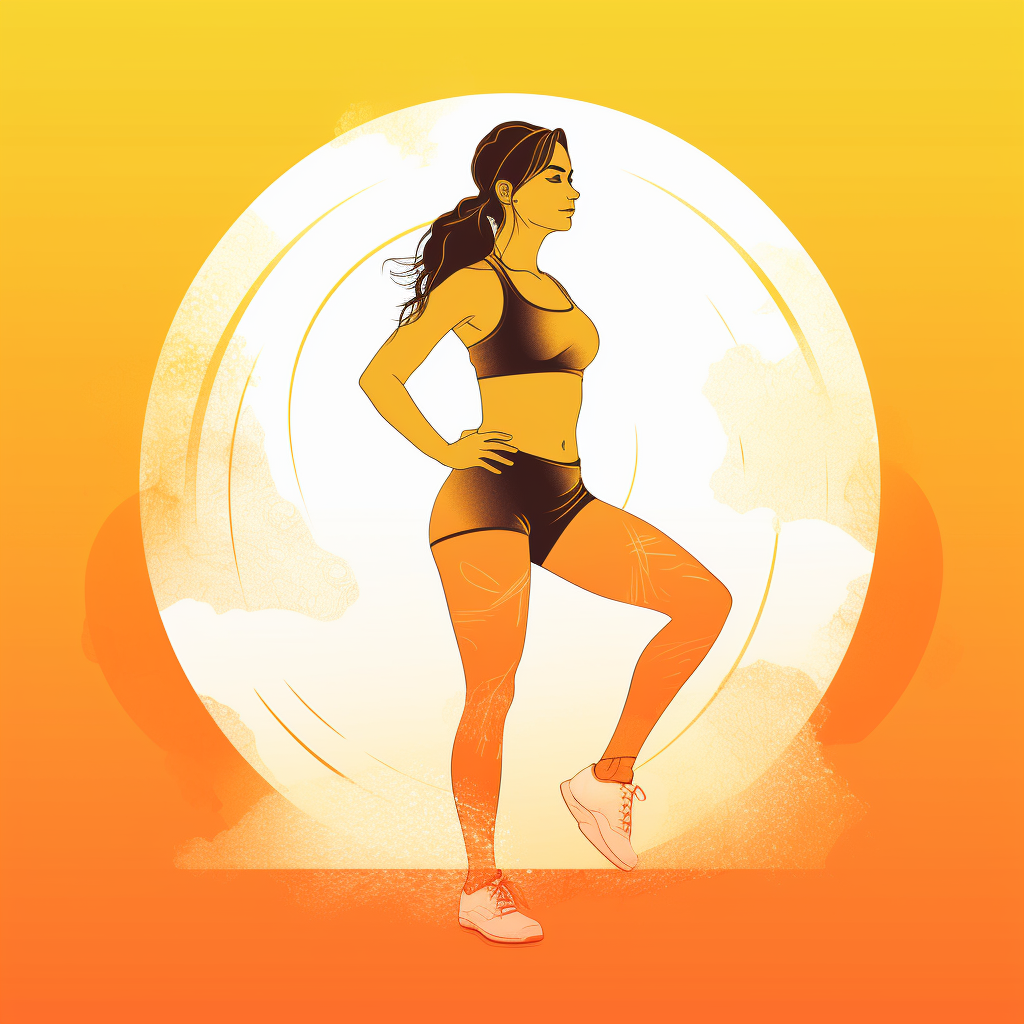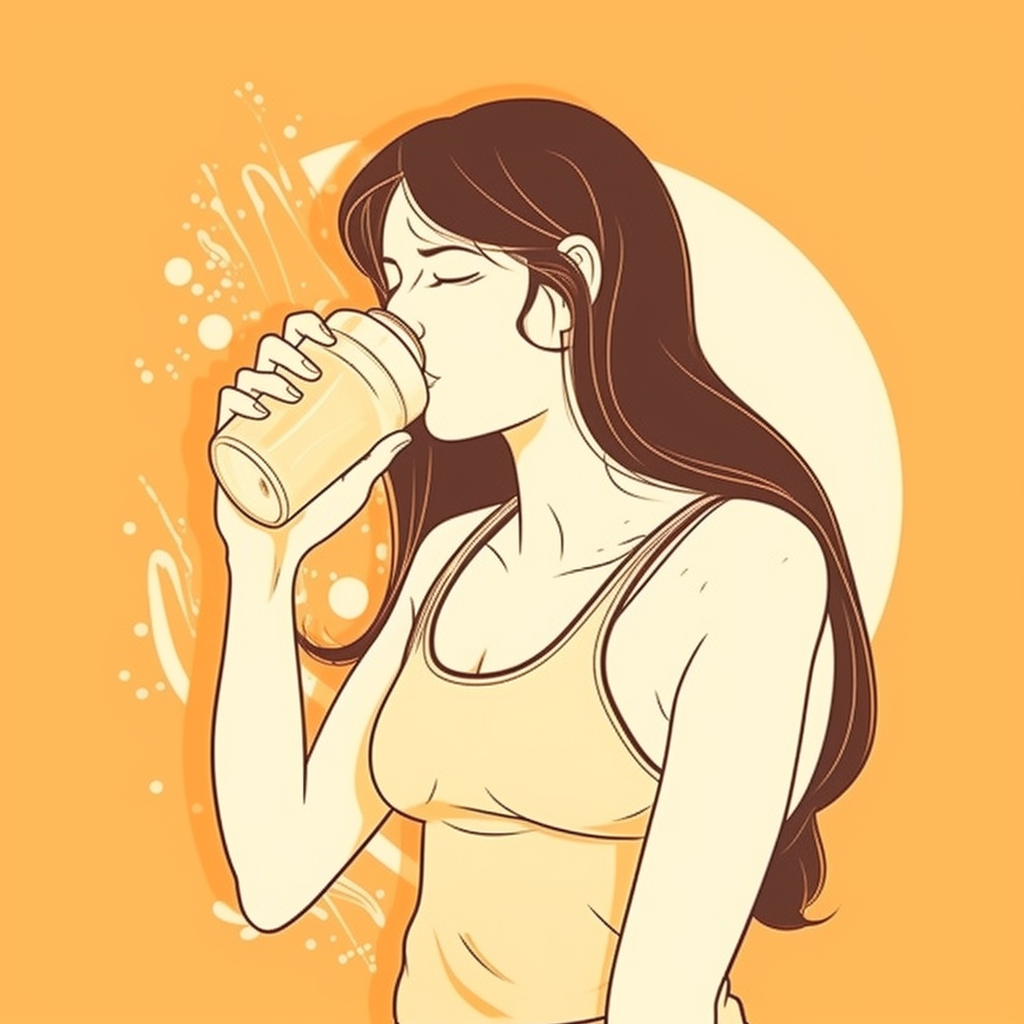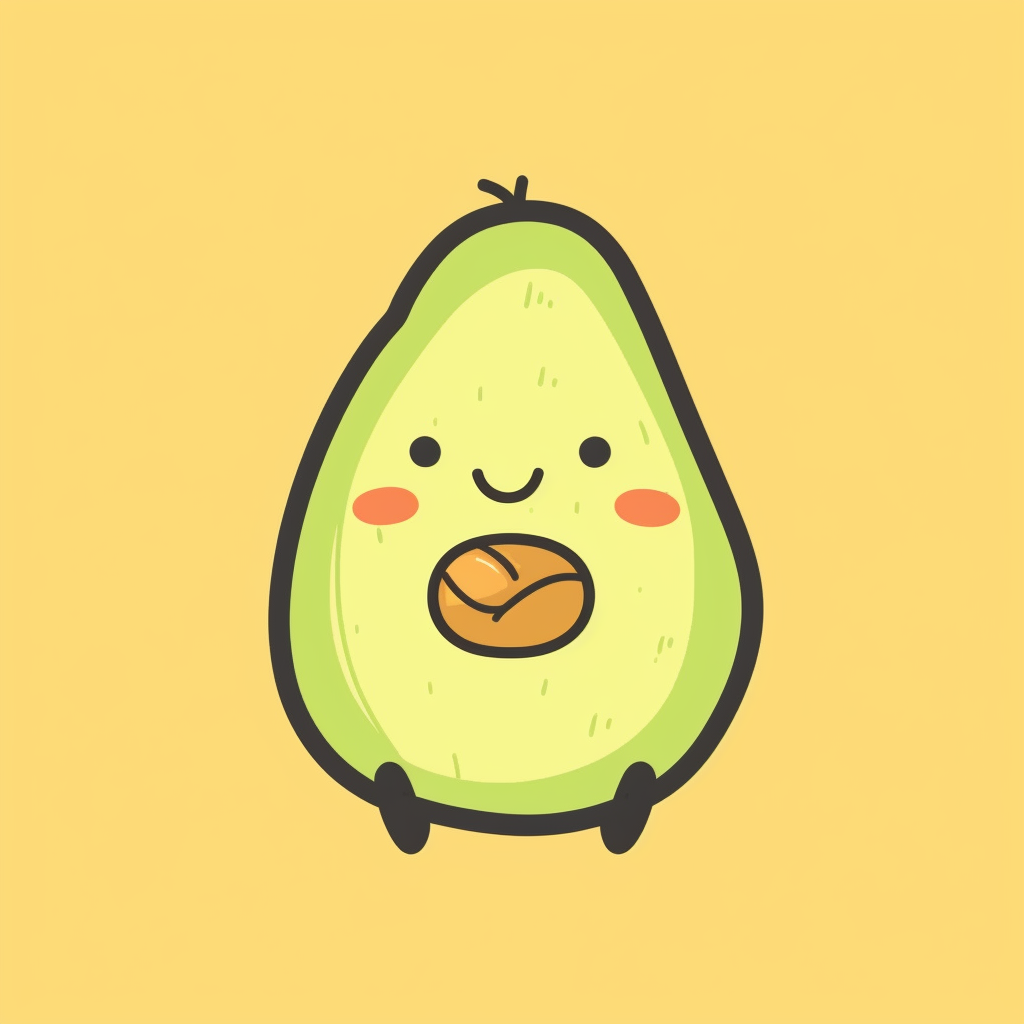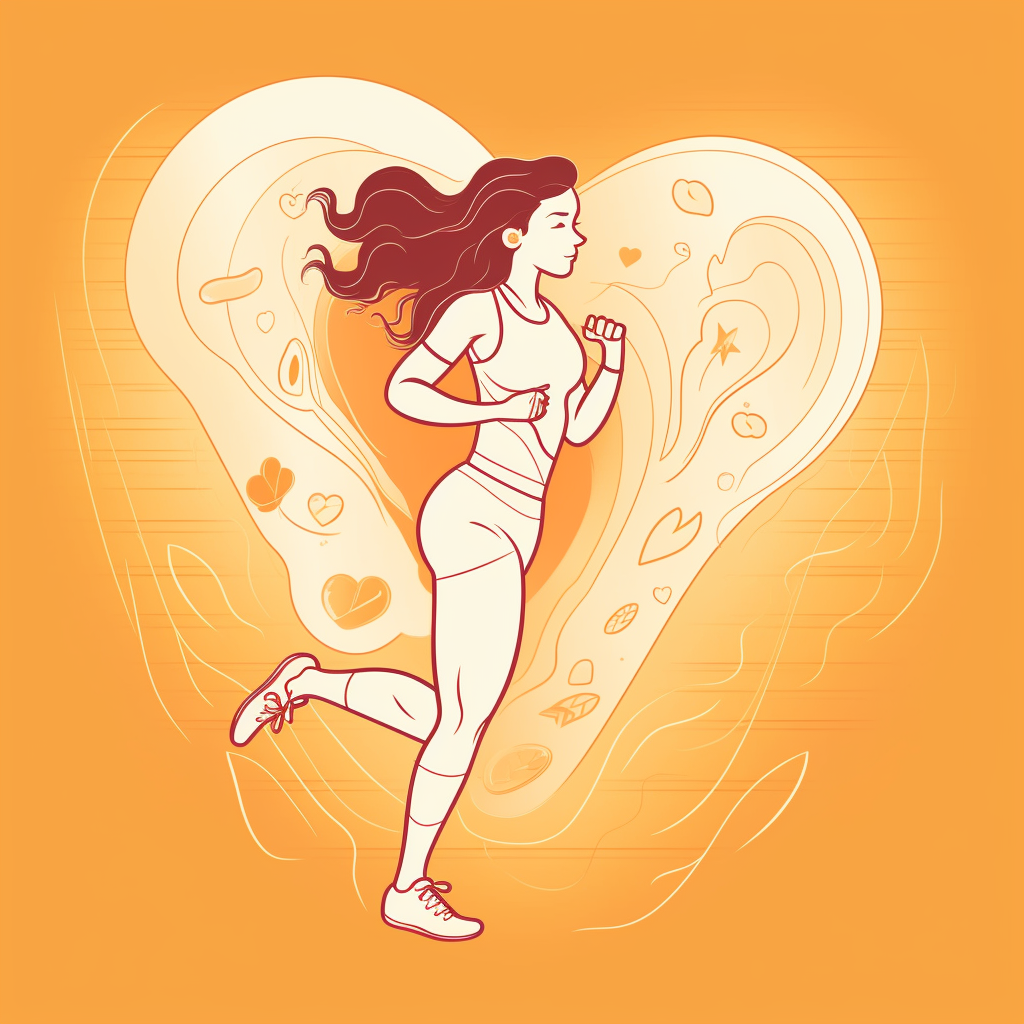Are you tired of feeling self-conscious about your butt? Do you want to achieve a rounder, more toned behind?
You’re not alone! Many women strive for a shapelier butt, but don’t know where to start.
Achieving a round butt requires a combination of exercises that target your glutes as well as a healthy diet to fuel your body.
But don’t worry – it’s not as difficult as it may seem! With the right strategies and a little bit of dedication, you can achieve the booty of your dreams.

In this article, we’ll provide you with a list of the best exercises for building a round butt, along with tips on how to incorporate them into your workout routine.
Additionally, we’ll share diet tips and tricks to help you fuel your body and reach your goals faster. So, if you’re ready to transform your butt into a round, shapely behind, keep reading!
Understanding How to Get a Round Butt
If you’re looking to build a rounder, more toned butt, the first step is to understand how your body works. Your glute muscles are responsible for the shape and size of your booty, so it’s important to target them in order to achieve your goals.
There are three main glute muscles: the gluteus maximus, gluteus medius, and gluteus minimus. Each of these muscles plays a role in butt shape and size.
But let’s first address the main question…
Why are my glutes not round?
There are a few factors that can contribute to less-than-rounded glutes. For starters, genetics plays a role in your body’s natural shape, so there may be some aspects that are out of your control.
Additionally, if you spend a lot of time sitting throughout the day, this can lead to weak glutes and therefore a less-than-ideal shape.
But it is entirely possible to achieve the rounder butt of your dreams. It requires dedication and consistency, but it’s possible!
Keep reading to understand your body and your booty and after that we’ll go over practical stuff you can do.
Identifying the different muscles in the glutes

As mentioned above, your glutes are made up of three main muscles – the gluteus maximus, gluteus medius, and gluteus minimus.
- The gluteus maximus is the primary muscle responsible for creating roundness in the butt. It’s located on your upper backside and extends down to behind your knees. It’s primarily responsible for hip extension, abduction (moving your leg away from your body), and external rotation (rotating your leg away from the midline of your body).
- The gluteus medius is located on the outside of your hip and helps with stability, balance, and preventing knee injury. This muscle helps to keep you upright when standing on one foot.
- The gluteus minimus is located underneath the gluteus medius and works together with the gluteus medius to keep your hips stable.
Targeting these muscles is key if you want to create a rounder, more toned butt.
The importance of targeting all areas of the glutes for optimal results
Targeting all areas of the glutes is especially important if you’re looking to achieve a rounder, more toned butt. It’s not enough to just focus on one area – all three muscles (gluteus maximus, gluteus medius, and gluteus minimus) need to be worked in order to get optimal results.
Think of it like this – if you don’t work all three areas, some muscles will be left behind and won’t develop as much as they could.
To get that round, toned booty of your dreams, you need to focus on exercises that target all three of these muscles.
Developing a Targeted Workout Plan for Round Butt

So, now that you understand the different muscles involved in creating a round butt and why it’s important to target all of them, let’s talk about how to put together an effective workout plan for achieving your goals.
Choosing exercises that specifically target the glutes
When it comes to choosing exercises that specifically target the glutes, you need to know that there are compound exercises and isolation exercises. Compound exercises involve multiple muscle groups, while isolation exercises target one specific muscle group.
To get the best results for a rounder butt, it’s important to include both compound and isolation exercises in your routine.
These are must-have exercises to get the most out of your workout:
- Feet flat glute bridge: This is an excellent exercise that targets all areas of the glutes while also engaging the core and quads. To do this exercise, start by lying on your back with your feet flat on the floor and hip-width apart. Raise your hips up into a bridge position so that your thighs are parallel to the floor, and then lower down and repeat.
- Bulgarian split squat: This is a unilateral exercise (meaning you only use one leg at a time) that focuses on the glutes, quads, and hamstrings. To do this exercise, start in a standing position with your left knee bent at a 90-degree angle behind you and your right foot planted firmly on the ground. Push up, keeping your torso upright while engaging your glutes. Lower back down and repeat on the other side.
- Glute kickback: This exercise targets all three areas of the glutes as well as the hamstrings. To do this exercise, start in a standing position with your feet hip-width apart and one hand on a wall for balance if needed.
- Glute kickback with exercise band: This exercise is similar to the Glute Kickback, but it adds an extra challenge by incorporating a resistance band. To do this exercise, start in a standing position with your feet hip-width apart and the band looped around both ankles. Drive one knee up and out against the band while keeping your torso upright. Return to the starting position and repeat on the other side.
- Squat with 45-degree angle: This exercise targets all areas of the glutes, as well as your quads, hamstrings, and core. To do this exercise, start in a squat position with your feet slightly wider than hip-width apart and your toes pointing outward at a 45-degree angle. Push up through your heels and sit back into a squat position. Return to the starting position and repeat.
- Hip thrust: This is a great exercise for targeting the glutes and hamstrings. To do this exercise, start by lying on your back with your feet flat on the floor and hip-width apart. Raise your hips up into a bridge position so that your thighs are parallel to the floor, then lower down and repeat.
- Walking lunges: This exercise targets all areas of the glutes and hamstrings while also engaging your quads, core, and gluteus medius. To do this exercise, start in a standing position with your feet hip-width apart. Step forward with one foot and lower into a lunge position before returning to the starting position. Repeat on the other side.
- Single leg deadlifts: This exercise targets all areas of the glutes and hamstrings, as well as your quads, core, and gluteus medius. To do this exercise, start in a standing position with your feet hip-width apart. Lift one foot off the ground while keeping your torso upright, and lower your other leg until it almost touches the floor before returning to the starting position. Repeat on the other side.
- Goblet squat: This exercise targets all areas of the glutes, quads, and hamstrings. To do this exercise, start in a standing position with your feet slightly wider than hip-width apart. Hold a weight or medicine ball close to your chest while lowering into a squat position. Push up through your heels and return to the starting position.
By incorporating these effective exercises into your workout routine, you can shape and tone your glutes for a rounder butt that looks great in a pair of jeans.
Here are examples for some of these exercises:
To make this easier for you, here is a table with a summarized explanation.
| Exercise | How it Helps Develop Rounder Glutes | Effectiveness Rating (1-10) |
|---|---|---|
| Feet Flat Glute Bridge | Targets the gluteus maximus, promoting muscle growth | 7 |
| Bulgarian Split Squat | Isolates glute muscles, increasing strength and roundness | 8 |
| Glute Kickback | Engages all three glute muscles for overall development | 7 |
| Glute Kickback with Exercise Band | Adds resistance, enhancing muscle growth and roundness | 8 |
| Squat with 45-Degree Angle | Activates the glutes more effectively than traditional squats | 9 |
| Hip Thrust | Focuses on glute activation and strength, improving shape | 10 |
| Walking Lunges | Works each glute individually, promoting balance and shape | 8 |
| Single Leg Deadlifts | Isolates glutes, increasing strength and roundness | 8 |
| Goblet Squat | Targets glute muscles, encouraging growth and roundness | 9 |
Please note that the effectiveness rating is subjective and might vary from person to person. It is essential to maintain proper form and technique during these exercises and combine them with a balanced diet and adequate rest for optimal results.
Workout tips for a rounder butt
Now it would be great to know about some tips to get a rounder butt.
- Focus on unilateral exercises: Unilateral exercises are single-sided exercises that target one side of your body. They are perfect for targeting and strengthening muscles in the glutes, such as the gluteus minimus, medius, and maximus. Examples include Bulgarian split squats, hip thrusts, single-leg deadlifts, and walking lunges.
- Increase range of motion: Increasing the range of motion during exercises like squats and hip thrusts will help you engage more muscles in the glutes. This will result in a deeper and more effective workout.
- Add resistance: Adding resistance to your exercises, such as by using an exercise band or adding weight, can increase the intensity of your glute workout and enhance results.
- Take rest breaks: Rest is an essential part of any exercise routine and should not be overlooked. Taking regular rest breaks will allow your body to recover, so that you can get the most out of each workout and continue making progress towards your goals.
- Implementing progressive overload to increase muscle mass: Progressive overload is a technique that involves gradually increasing the intensity, weight, or reps of an exercise over time. This will help to increase muscle mass in the glutes and ultimately create a rounder butt.
- Finding a workout routine that fits your schedule and fitness level: It is important to stay consistent when trying to reach any fitness goal. Find a workout routine that fits your schedule and fitness level, so that you can stick with it and stay motivated.
- Getting enough sleep for optimal muscle recovery: Just like rest, getting adequate sleep is essential for muscle recovery and optimal results. Aim to get 7-9 hours of quality sleep per night.
- Implementing low-impact exercises like stair climbing and cycling: Low-impact exercises like stair climbing or using the Stairmaster machine and cycling are great for targeting the glutes while providing an effective workout with minimal impact on your joints.
- Alternating between slow and fast reps for improved muscle gains: Alternating between slow and fast reps during exercises like squats or deadlifts can help improve muscle gains in the glutes. Slower reps target the eccentric phase of the exercise, while faster reps help to recruit more muscles during the concentric phase. Try to focus more on eccentric reps when targeting the glutes.
Knowing all of this now leads us to understand how we need to nourish our bodies in order to achieve the best results.
Proper Nutrition for Building Round Glute Muscles
Having a balanced diet is essential for muscle growth and recovery. Eating quality proteins, carbs, and fats will help you maximize your results in the gym.
For you to have a round booty, you need to consume a high-protein diet. Protein helps to build and repair muscles, so it is essential for muscle growth.
Let’s first talk about that…
Consuming enough protein to support muscle growth

Protein is vital when it comes to building those rounder glutes.
Aim for at least 1.2 to 1.7 grams of protein per kilogram of body weight each day. This will provide the amino acids necessary for muscle repair and growth after your intense glute exercises.
Good sources of protein include chicken, beef, fish, eggs, dairy products, legumes, nuts, and seeds. You should aim to spread your intake out throughout the day and consider supplementing with whey protein powder if you find it hard to meet your protein needs with food alone.
It’s important to remember that eating enough protein alone won’t give you a round butt, you must also consume enough calories and carbs to support muscle growth.
Consuming a calorie surplus to maximize muscle gains
In order to build round glute muscles, you need to eat more calories than you burn in a day. This is known as creating a calorie surplus.
The surplus should be around 10-20% above your basal metabolic rate (BMR). Your BMR is the number of calories your body needs to maintain its current weight.
It can be calculated using an online calculator.
Eating a balanced diet with a focus on nutrient-dense whole foods

To achieve strong glutes and a well-rounded booty, make sure to eat a variety of nutrient-dense whole foods like fruits, vegetables, lean proteins, and whole grains.
These foods provide essential vitamins and minerals that support a healthy human body and help with balanced muscle development.
Fruits and vegetables are full of fiber, vitamins, and minerals that help to keep the body functioning at its best. Eating a variety of colors ensures you’re getting all the essential nutrients needed for optimal health.
Avoiding processed foods and excess sugar

Processed foods and excess sugar can lead to unwanted weight gain and square shapes. Cut back on these foods and opt for healthier alternatives that promote strong glutes and overall athletic performance.
Processed foods such as chips, cookies, and frozen meals are packed with empty calories and added sugar. These unhealthy snacks can cause your body to store excess fat, which leads to a flat butt or an undesired square shape.
To achieve optimal roundness in the glutes, it is important to limit processed food intake and focus on clean eating.
Staying hydrated supports muscle function and recovery

Hydration is crucial for a strong booty! Drinking enough water throughout the day helps with muscle function, recovery, and overall performance.
Aim for at least 8-10 glasses of water daily, and make sure to hydrate before, during, and after your glute exercises.
To easily reach your hydration goals, carry a water bottle around with you throughout the day and sip on it periodically.
Learning how to time meals for optimal muscle growth
To maximize your gains, eat a combination of protein and carbohydrate calories within 30 minutes to 2 hours after your workout.
This will help replenish glycogen stores and repair muscle tissue, leading to rounder glutes over time.
You should also be sure to eat a balanced breakfast within an hour of waking up to kick-start your metabolism and get the necessary building blocks for muscle development.
Taking supplements, such as BCAA’s, to maximize gains
BCAA’s (branched-chain amino acids) can be a great addition to your nutrition plan to support muscle growth and recovery. They can help reduce muscle soreness, increase protein synthesis, and improve athletic performance.
BCAA’s are essential amino acids that your body can’t make on its own, so they must be obtained through dietary sources or supplementation. The three primary BCAA’s are leucine, isoleucine, and valine.
If you don’t want to buy supplements, BCAA’s can be found in high-protein foods like meat, eggs, and dairy.
When it comes to building a round butt, taking a supplement containing BCAA’s can help you reach your goals faster.
Eating healthy fats for sustained energy and satiety throughout the day

Don’t forget about your fat intake! Healthy fats, like those found in avocados, nuts, and olive oil, provide sustained energy and keep you feeling full longer.
Include these in your caloric intake plan to ensure a well-rounded diet for building that bubble butt you’ve been dreaming of!
Fats are important because you want your hormones to be balanced, your metabolism going, and your energy levels high. Eating healthy fats can help with all of these things and more.
So, now we have covered the main exercises and fundamentals of nutrition to achieve a round butt.
This will help you get there for sure, but let’s go one level further and discuss additional strategies that will guarantee getting that butt even rounder.
Incorporating Cardio to Get Rounder Butt

Did you notice those athletes at the gym who have amazing round butts? Chances are, they are incorporating some cardio into their routine. Yes, that’s right! Cardio can help you get a rounder butt too.
Cardio will burn calories, and when combined with a good glute-focused exercise program, it will help reduce fat and build muscle in your lower body. This will create a rounder butt shape.
Just keep in mind that you don’t want to overdo it with cardio, as this can lead to muscle loss. Aim for 30-45 minutes of moderate-intensity cardio 3 times a week.
You don’t want to get that flat butt you see in some marathon runners!
Understanding the role of cardio in fat loss and glute muscle definition
Many people don’t realize that cardio can actually play an important role in fat loss and glute muscle definition!
It’s true: when done correctly, cardio can help you reduce your overall body fat percentage, which will allow the muscles of your glutes to become more visible and better defined.
When you combine cardio with a good strength training program focused on the glutes, you can dramatically reduce your body fat percentage and reveal the round shape of your glutes.
However, it’s important to note again that you should not overdo it with cardio! Too much can actually lead to muscle loss, so be sure to keep your cardio sessions short and sweet.
Incorporating interval training to maximize calorie burn
Interval training can be a great way to maximize calorie burn and get the most out of your butt workout.
Interval training is a type of exercise that alternates between short bursts of high-intensity activity followed by low intensity recovery periods.
This type of exercise has been proven to increase cardiorespiratory fitness, improve metabolic health, and help increase fat burning for up to 24 hours after your workout.
Increasing the speed or incline of your workout to challenge yourself and build glute muscles faster
If you typically walk at a slow pace on the treadmill, try jogging for one minute, then walking for one minute. This type of interval training can help you burn more calories and build your glutes faster.
You can also challenge yourself by increasing the incline on the treadmill. This will help you engage your glutes more and build stronger muscles in less time.
Combining interval training with incline exercises can be a great way to get the most out of your butt workout.
Now that you know all of this, it’s time to tie it all together and put it into action.
Frequently Asked Questions
After reading through the information above, you may still have some questions about building a round butt. In this section, we’ll answer some of the most frequently asked questions about this topic.
Can I build a round butt without weights or equipment?
Yes, it is possible to build a round butt without weights or equipment. Bodyweight exercises are actually some of the most effective and productive exercises when it comes to working your glutes.
Squats, lunges, and step-ups are all great bodyweight exercises that can help you achieve a rounder butt. Plus, they’re easy to do at home or in a park.
How long does it take to build a round butt?
If you consistently perform exercises focused on strengthening your gluteal muscles and eat a balanced diet, you should start to see results in as little as two weeks.
However, it’s important to remember that everyone is different, and the amount of time it takes to build a round butt can vary from person to person.
What other lifestyle changes can help me build a round butt?
Eating healthy, getting enough sleep, and staying hydrated are all key factors in building a toned and shapely butt.
Making sure you get enough protein is important, too. Protein helps your muscles recover and build strength after an intense workout session. Try to consume at least 1 gram of protein per pound of body weight.
But the most important lifestyle change you can make is to be consistent with your workouts. Consistency is key when it comes to building a round butt.
What should I do to prevent knee pain when doing glute exercises?
Knee pain is a common issue when it comes to butt exercises, but it doesn’t have to be a problem! Here are some tips for preventing knee pain during glute exercises:
1. Make sure your form is correct and that you’re not putting too much strain on your knees. Focus on keeping your back straight and engaging your core at all times.
2 . Start slowly and gradually increase the intensity of your exercises over time.
3. Stretch before and after your workouts to help loosen tight muscles and reduce the risk of injury.
4. Wear supportive footwear and knee braces if necessary.
Another thing that can help is to focus on activating the correct muscles. Glute exercises should focus on contracting your glutes, not your quads or hamstrings.
This will ensure that all of the strain is placed on the right muscles and not your knees.
How can I keep my glutes toned and looking round without exercise?
This is rarely recommended, as exercise is the best way to build and maintain a round butt. That said, there are some lifestyle changes you can make to help keep your glutes toned and looking their best.
First, focus on eating a balanced diet that includes plenty of lean protein and healthy carbohydrates. Make sure you’re getting enough sleep and staying hydrated as well.
Finally, walking and gentle stretching can help maintain muscle tone in your glutes even if you don’t do any specific butt exercises.
One extra tip here is that if you have a hill nearby, try walking up and down it a few times a week, as this can be effective for toning the glutes. The reason for this is that the added resistance makes your glutes have to work much harder than they would on flat ground.
Is it better to do bodyweight squats or sumo squats to build a round butt?
The great thing about building a round butt is that there are a variety of exercises to choose from. Both bodyweight squats and sumo squats are effective exercises for targeting your glutes, but the one that’s best for you will depend on your fitness level and goals.
Bodyweight squats involve standing with your feet shoulder-width apart, then squatting down while keeping your weight on your heels and your back straight.
Sumo squats involve taking a wider stance and turning your toes out as you squat down, allowing you to target the inner and outer glutes more effectively.
If you’re just starting out with exercise, bodyweight squats might be the best option for you. They don’t require any additional weights or equipment, and they can be done anywhere. As you build strength, you can then move on to sumo squats and add some resistance with dumbbells or ankle weights.
Do deep squats work better for building a round butt?
Absolutely! The deeper you go into the squat, the more your glutes will be worked.
This helps to target all of the key muscles in your butt, including the gluteus medius and maximus, which are the two largest muscles in your glutes.
The key to getting the most out of deep squats is making sure you’re using good form. Keep your back straight and all the weight on your heels. You should also be mindful of how far down you go; don’t push yourself too hard and risk injury.
If you’re new to deep squats, start off with lighter weights and build up the resistance gradually.
Also, make sure to take rest days between workouts to give your body time to recover. If you’re consistently pushing yourself too hard, you won’t see the results you want from your butt workout.
Are weighted squats better for building a round butt than bodyweight squats?
Yes. The added weight adds resistance, which can help you build strength faster than bodyweight squats alone.
However, it’s important to make sure that you have the correct form and start off with lighter weights before gradually increasing the resistance. This is especially important if you ’re just starting out and want to avoid any injuries.
Conclusion
Building a round butt takes time and effort, but with the right exercises, nutrition, and lifestyle habits, it’s achievable for anyone.
Some of the best exercises for building a round butt include squats, lunges, deadlifts, hip thrusts, and glute bridges.
It’s important to work your glutes at least 2-3 times per week and allow for proper rest and recovery time.
Eating a balanced diet with enough protein and calories is also important for muscle growth. While weights and equipment can be helpful, bodyweight exercises and resistance bands can also be effective.
Results will vary based on individual factors, but with consistency and dedication, you can build a rounder, stronger butt. Remember to also prioritize rest, hydration, and overall health for optimal results.
That’s everything you need to know about building a round butt. Now get out there and start working on your booty!
